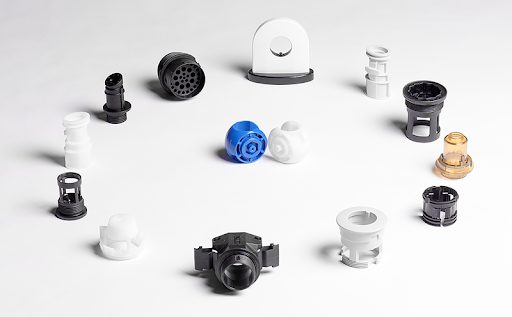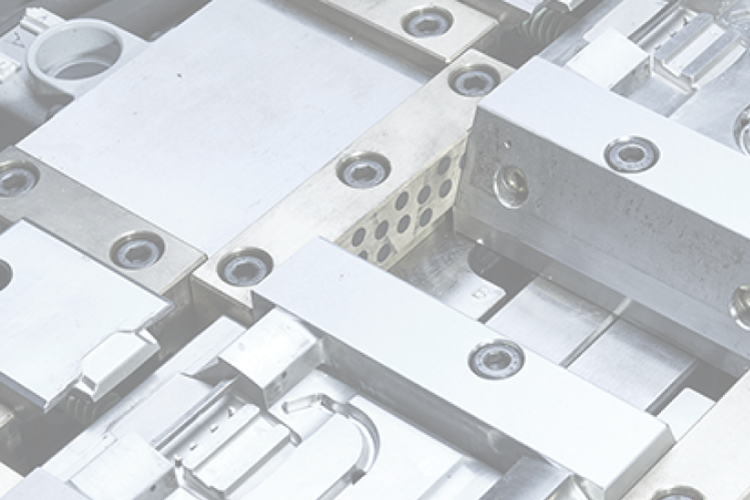HDPE Injection Moulding
High-Density Polyethylene (HDPE) is a versatile, cost-effective thermoplastic known for its excellent impact resistance, chemical durability, and ability to be injection moulded efficiently. With HDPE injection moulding, manufacturers produce rugged parts suitable for diverse industries—automotive, plumbing, packaging, and more. While HDPE offers many advantages, it also presents specific design and processing challenges that must be carefully managed for optimal results.
What is HDPE?
High-Density Polyethylene (HDPE) is a widely used thermoplastic polymer belonging to the polyolefin family. Known for its high strength-to-density ratio, HDPE is ideal for injection moulding of durable, lightweight components.
Key characteristics of HDPE:
- Semi-crystalline structure → enhances strength and dimensional stability
- Excellent impact resistance → performs well even at low temperatures
- Low moisture absorption → suitable for humid or submerged environments
- Chemical resistance → withstands acids, bases, and many solvents
- Good electrical insulation → effective for enclosures and non-conductive parts
- Lightweight → easier handling and lower shipping costs
- UV-resistant (in stabilized grades) → suitable for outdoor applications
- Food-safe and non-toxic → ideal for containers and packaging
Thanks to its versatility and recyclability (plastic identification code #2), HDPE is not only efficient in production but also aligned with sustainability goals. Its performance and cost-effectiveness have made it a mainstay in high-volume moulding processes across multiple sectors.

Material properties: HDPE in Injection Moulding
HDPE is available in a range of commercial grades, each offering slight variations in performance. Below is a summary of typical physical, mechanical, and processing properties of injection-moulded HDPE. These values serve as a reference for engineers and designers when selecting material grades or tuning process parameters.
Properties of Injection Moulded HDPE
|
Category |
Property |
Value |
|
Physical |
Density (g/cm³) |
0.954 |
|
Shrinkage Rate (cm/cm) – Linear |
0.0215 |
|
|
Rockwell Hardness (R scale) |
48.7 |
|
|
Mechanical |
Tensile Strength at Yield (MPa) |
26.2 |
|
Elongation at Break (%) |
583 |
|
|
Flexural Modulus (GPa) |
1.13 |
|
|
Flexural Yield Strength (%) |
31.3 |
|
|
Injection Moulding |
Melt Temperature (°C) |
246–280 |
|
Mould Temperature (°C) |
45–65 |
These values may vary slightly based on formulation and manufacturing standards, so it's essential to refer to specific material data sheets when precision is required.
Advantages of HDPE Injection Moulding
HDPE stands out in injection moulding thanks to its unique combination of strength, flexibility, and chemical resistance. One of its main advantages is cost-efficiency—the material is widely available, inexpensive, and supports fast cycle times, making it ideal for high-volume production.
From a performance standpoint, HDPE offers excellent mechanical durability. It resists impact and stress cracking, performs well in both hot and cold environments, and maintains dimensional stability over time. Its resistance to chemicals and moisture also makes it a preferred choice for applications in plumbing, packaging, and automotive systems.
Other notable benefits include:
- Lightweight structure that reduces overall product weight
- Good dielectric properties, useful in electrical component housings
- Recyclability, contributing to sustainable and circular production models
In summary, HDPE plastic injection moulding delivers a compelling mix of performance, versatility, and sustainability—ideal for manufacturers seeking reliable solutions across multiple industries.
Contact Idea Stampi to learn moreLimitations and challenges
While HDPE is a highly versatile and cost-effective material, it comes with specific limitations that must be carefully managed during design and production. Understanding these challenges helps ensure high-quality, consistent results.
One of the primary issues is shrinkage and warping. HDPE has a relatively high shrink rate (typically between 1.5% and 4%), which can lead to dimensional inconsistencies or part deformation if not properly accounted for in mould design and cooling strategies.
Another challenge lies in its surface properties. HDPE has low surface energy, making it difficult to bond with adhesives or other materials. It’s also less suitable for applications requiring fine surface finishes or decorative printing unless additional surface treatments are applied.
Common HDPE Injection Moulding challenges (TABELLA)
|
Challenge |
Description |
|
Shrinkage and warping |
High shrink rate can cause dimensional variation; requires mould compensation |
|
Bonding limitations |
Low surface energy inhibits painting, gluing, and overmoulding |
|
Low stiffness under load |
Can deform under sustained mechanical stress in structural applications |
|
Flammability |
Burns at high temperatures; special grades needed for flame retardancy |
|
Lower heat resistance |
Softens at relatively low temperatures (~130 °C), limiting high-heat use |
Despite these limitations, most of them can be effectively managed through smart part design, optimized mould engineering, and carefully controlled process parameters—ensuring HDPE remains a top choice for many injection moulding applications.
Typical Applications
Thanks to its combination of strength, flexibility, and chemical resistance, HDPE is used across a wide spectrum of industries. Injection-moulded HDPE components are particularly valued for their durability, low weight, and resistance to moisture and corrosion.
Some of the most common applications include:
- Industrial containers and tanks
HDPE is widely used for chemical drums, storage bins, and large-volume tanks due to its excellent chemical resistance and structural integrity. - Pipes and fittings
Its low permeability and durability make HDPE a go-to material for plumbing, irrigation, and underground piping systems. - Automotive parts
Lightweight and resilient, HDPE is ideal for components like fuel tanks, reservoirs, splash guards, and interior trim panels. - Consumer and household products
Items such as reusable bottles, cutting boards, tool handles, and bins benefit from HDPE’s food-safe, non-toxic nature and ease of moulding. - Electrical and telecommunications enclosures
Its dielectric properties and weather resistance make HDPE suitable for housings, cable ducts, and insulation covers.
These applications highlight the material’s versatility and its ability to meet the functional and regulatory needs of a wide variety of end-use environments. Whether in harsh outdoor conditions or hygienic indoor settings, HDPE continues to prove its value in plastic injection moulding.

Why choose Idea Stampi
At Idea Stampi, we combine decades of experience in mould design and injection moulding with a deep understanding of thermoplastic materials like HDPE. Our vertically integrated approach allows us to manage the entire production cycle—from co-design and prototyping to mould manufacturing, injection moulding, and final assembly.
Here’s why companies choose us for their HDPE plastic injection moulding needs:
- In-house mould making: we design and produce moulds internally, ensuring maximum precision, speed, and flexibility.
- Dedicated machinery: our fleet includes high-performance presses (25T to 180T) ideal for moulding HDPE parts with consistency and efficiency.
- Design for Manufacturing (DFM): we support your engineering team with proactive design optimization to reduce cost and improve part quality.
- Quality assurance: each part undergoes rigorous dimensional and functional checks to meet your standards.
- Material expertise: from standard HDPE to specialized grades, we help you select the right resin for your application.
Whether you’re developing a new product or improving an existing one, Idea Stampi offers a reliable partnership grounded in technical excellence, responsiveness, and a results-driven mindset.
Contact us now for a free quote!






